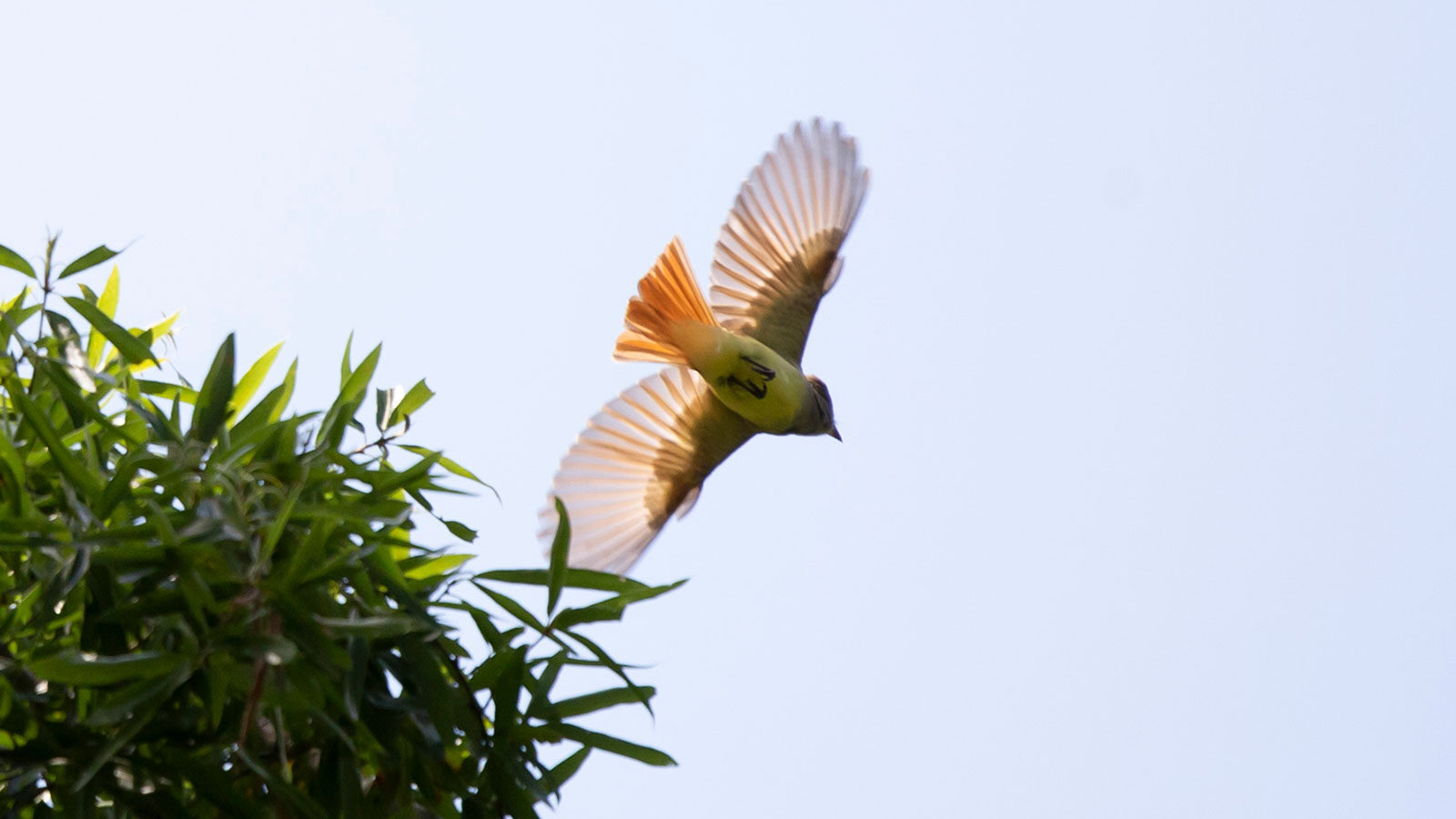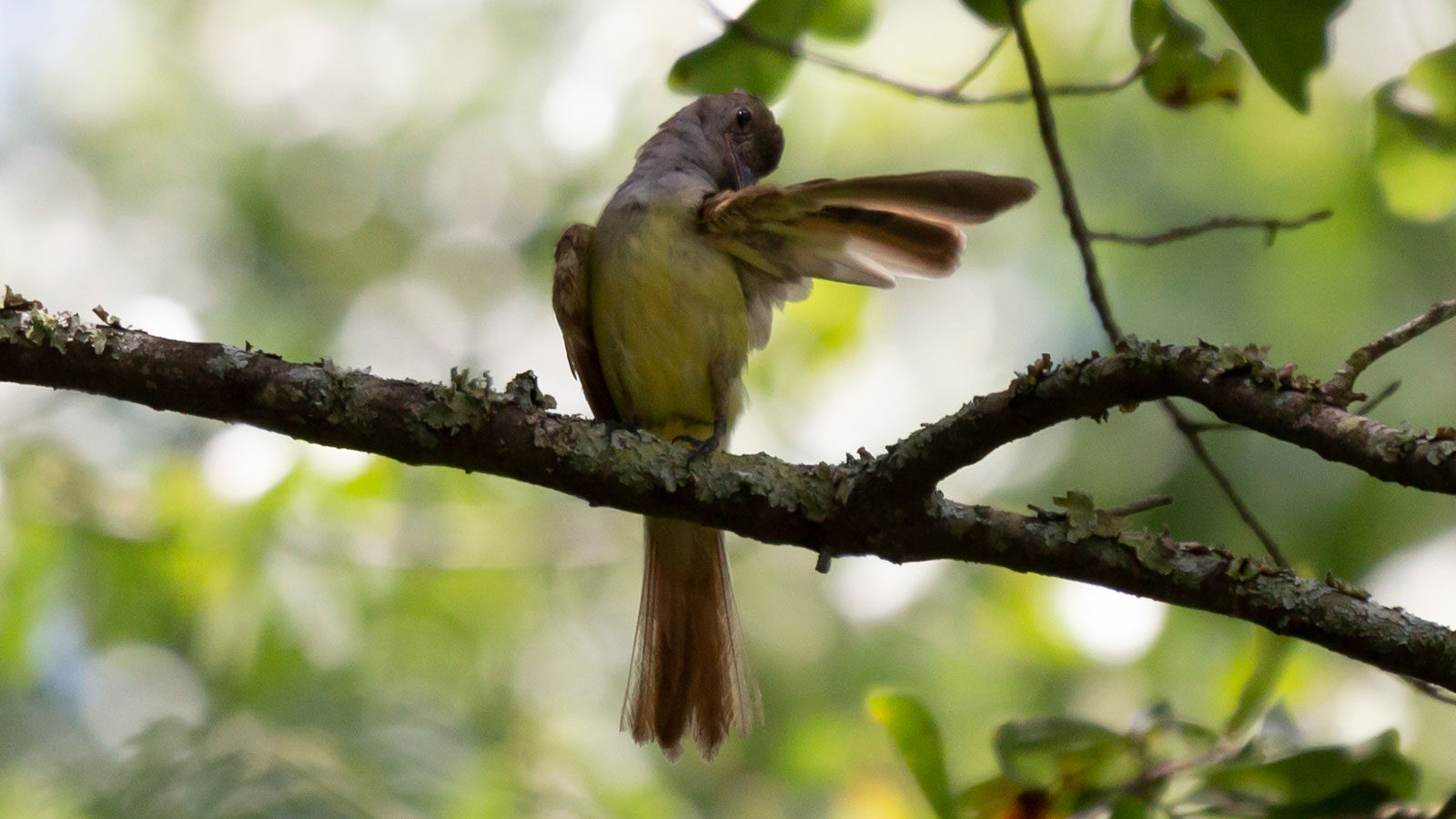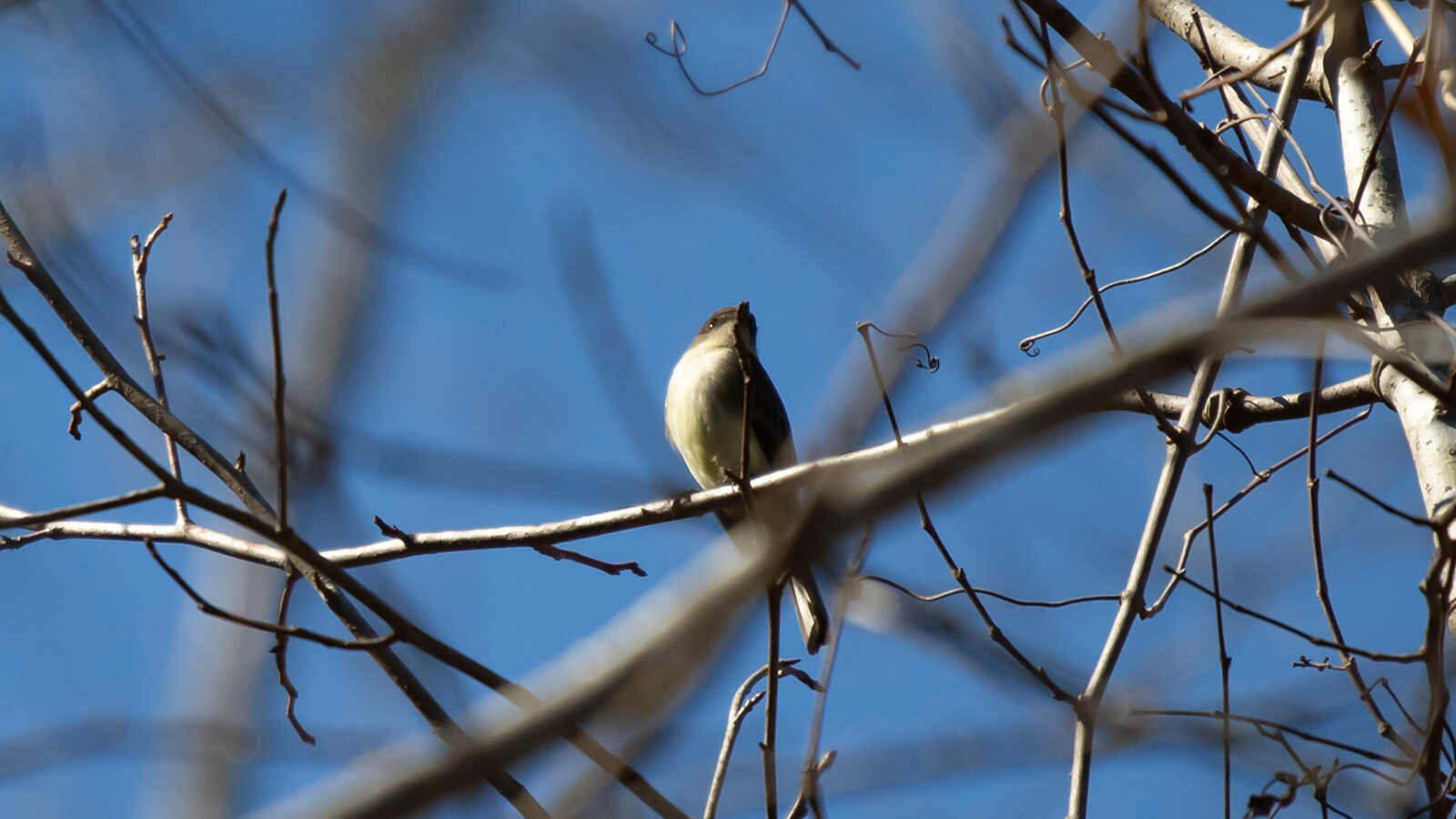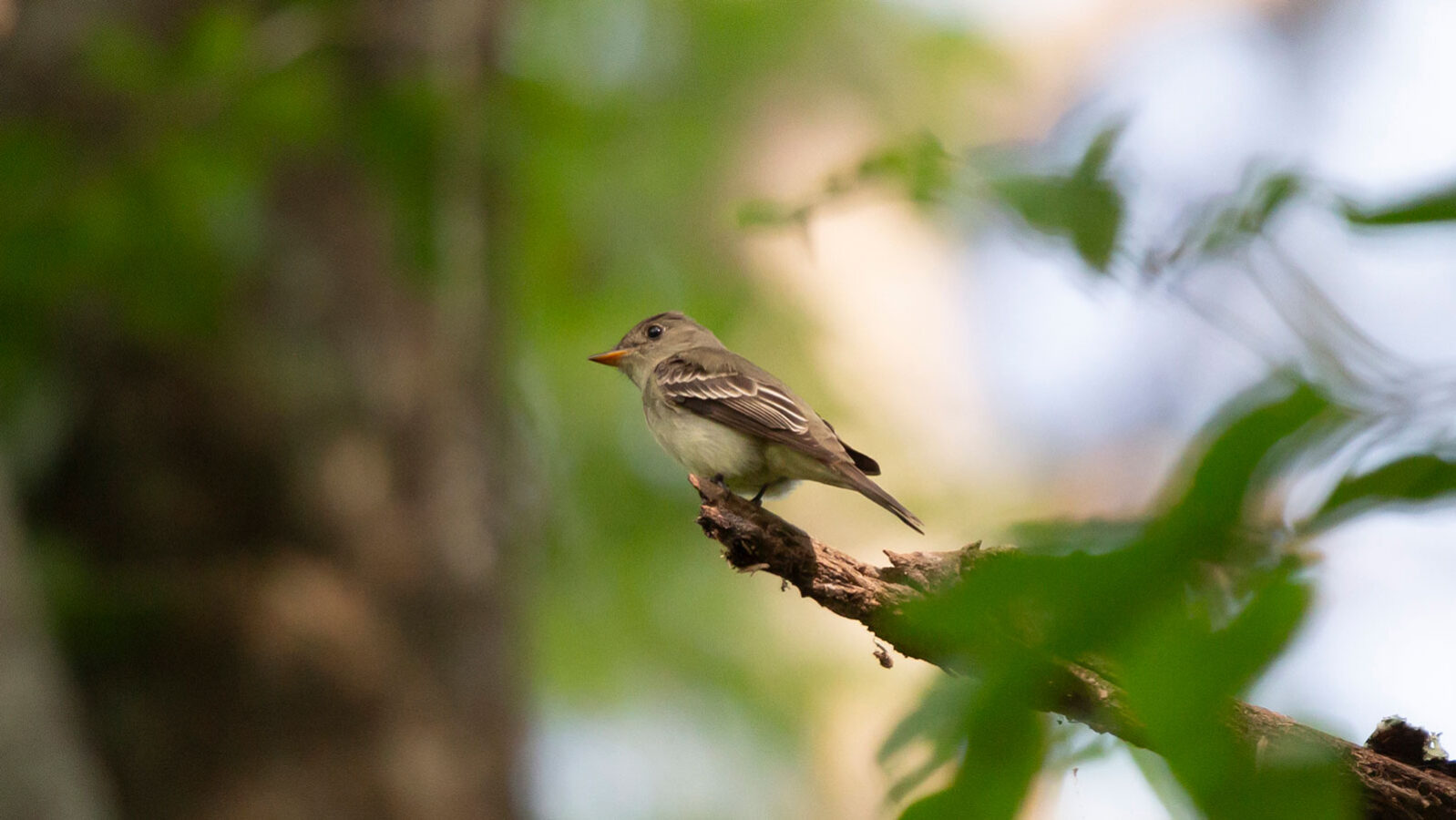
Did you know that great-crested flycatchers do not hop or walk?
Great-Crested Flycatchers
at
a Glance

Key Features:
Great-crested flycatchers are gray with yellow bellies and rusty stripes down the middles and tails.
Least Concern - Population Stable
Habitat:
Cemeteries, forest edges and clearings, open forests, orchards, pastures, parks, swamps, and wetlands
nesting habits:
Great-crested flycatchers build nests in cavities out of bark, cellophane, cloth, eggshells, feathers, fur, grass, leaves, moss, onion skin, paper, shells, snakeskin, stems, and twigs.
seasons great-crested flycatchers are active in our area:
Spring, summer
Diet:
Insects, berries, and spiders
hunting Behavior:
Great-crested flycatchers catch insects from the air.
commonly confused with:
Brown-Crested Flycatchers, Eastern Phoebes, and Eastern Wood-Pewees

Great-crested flycatchers are often confused with eastern phoebes because both have pale bellies.

Great-crested flycatchers are often confused with eastern wood-pewees because both are gray birds with lighter color bellies.